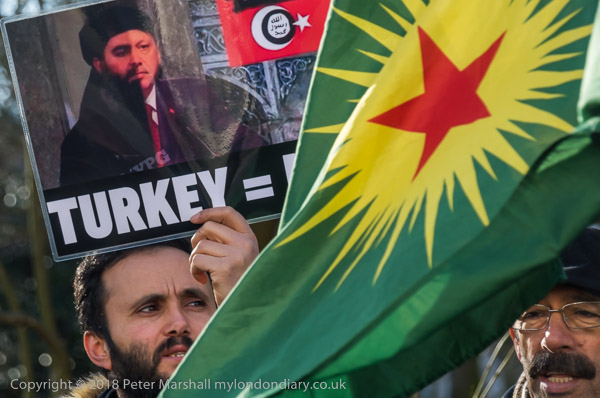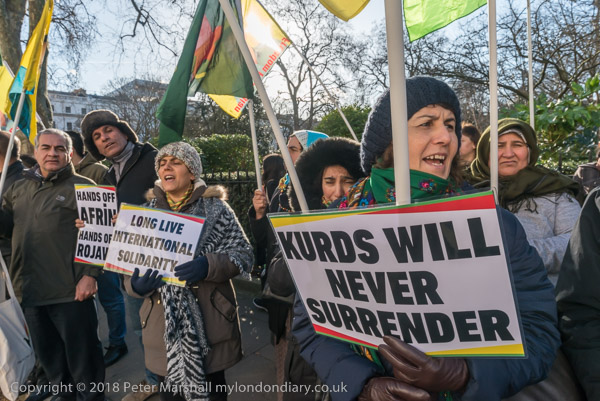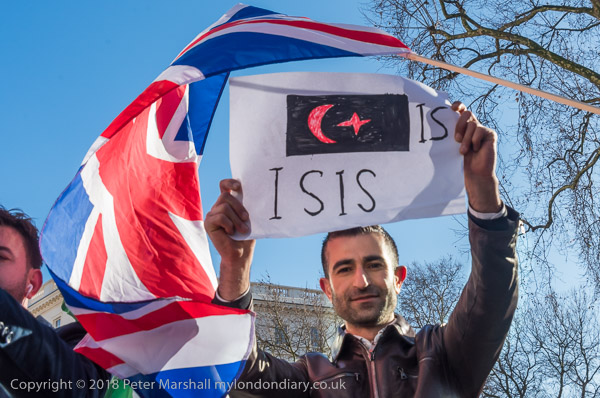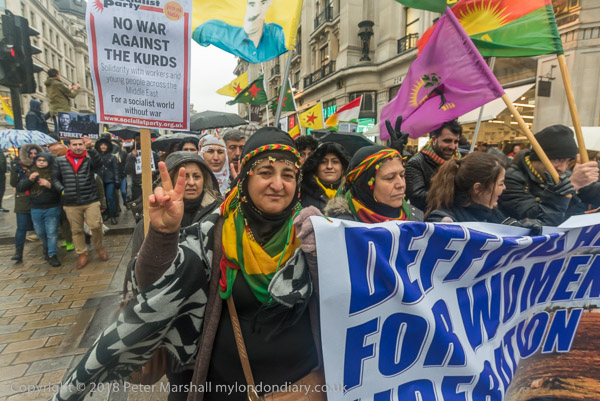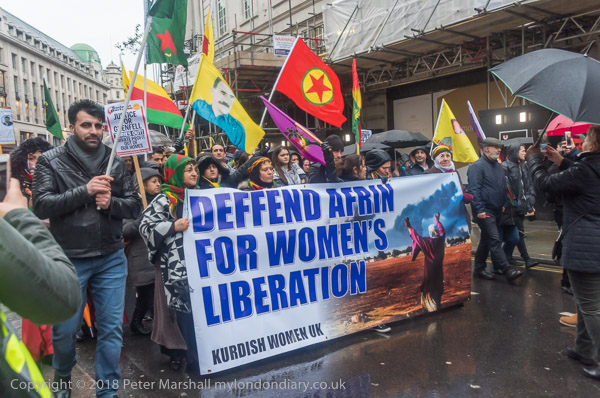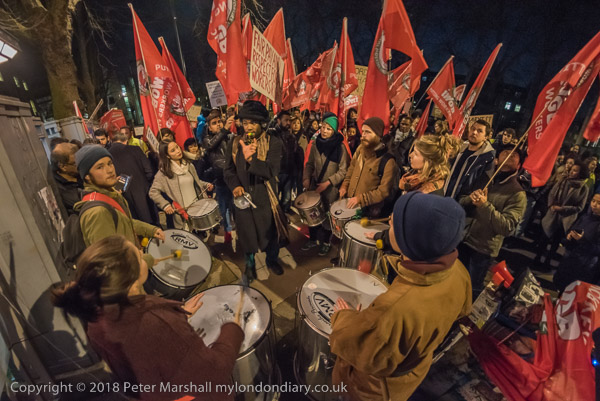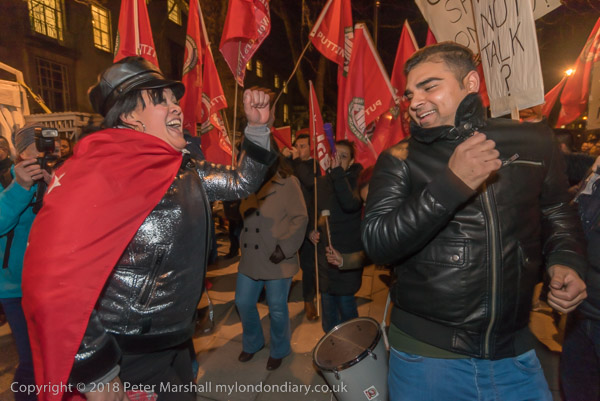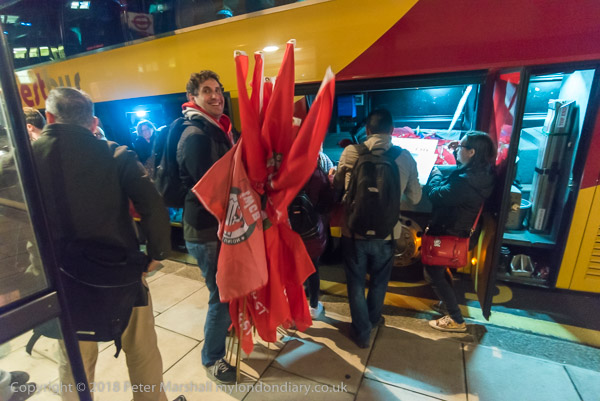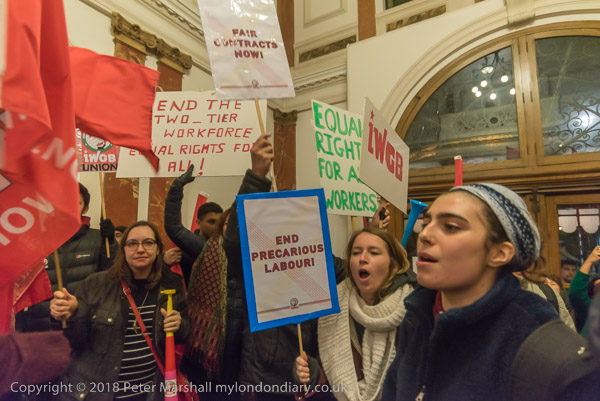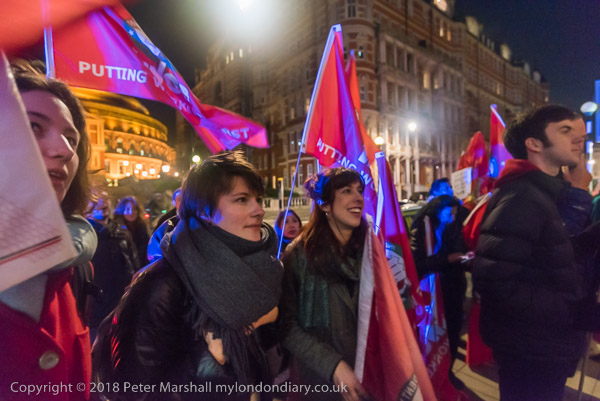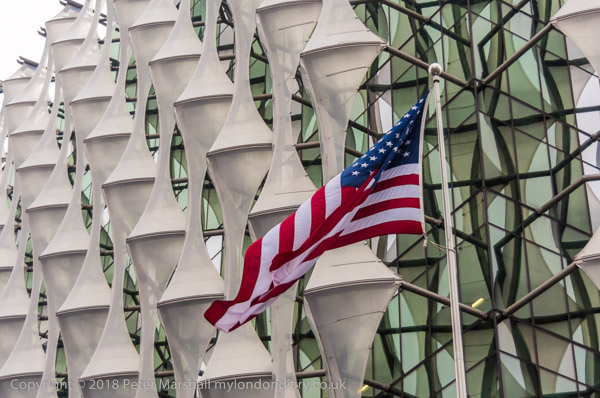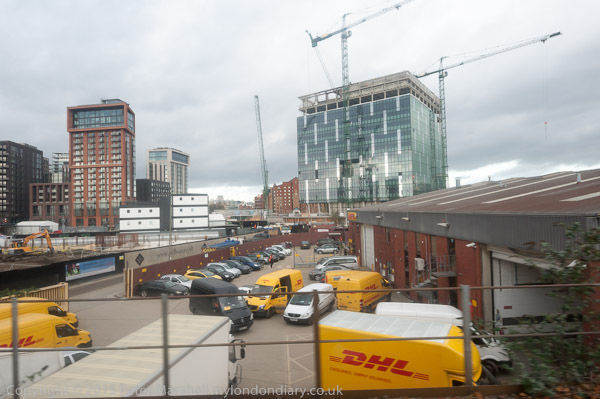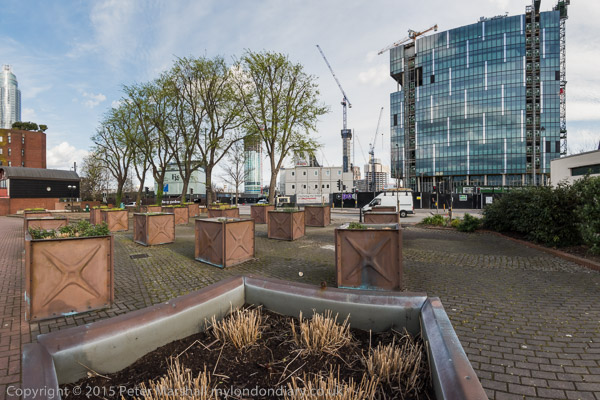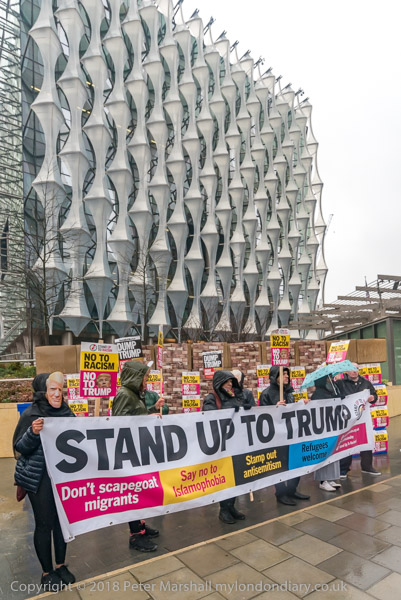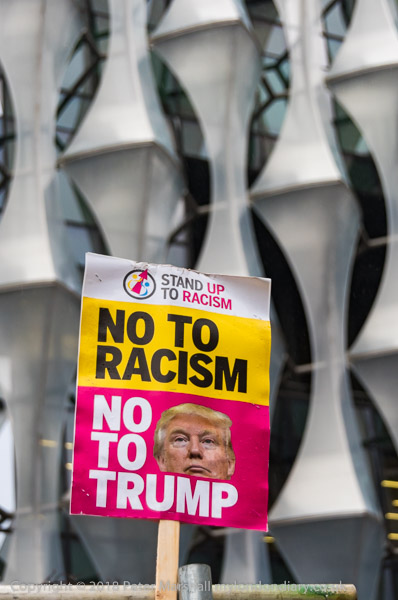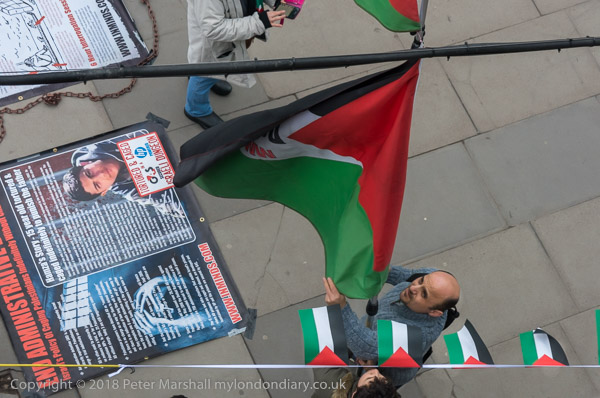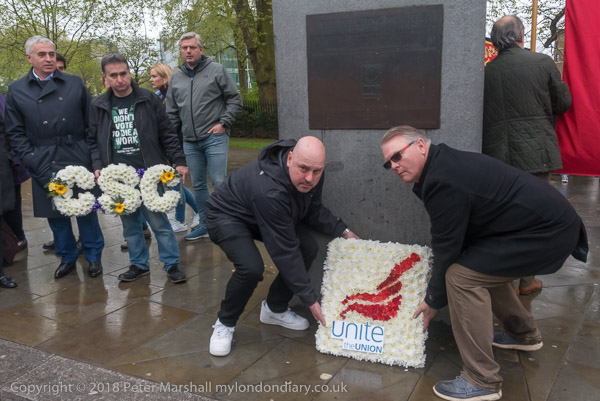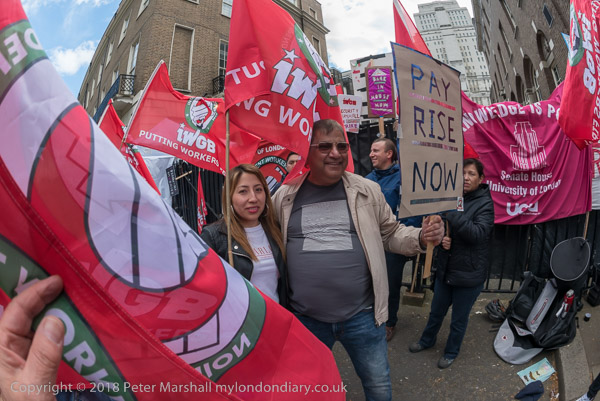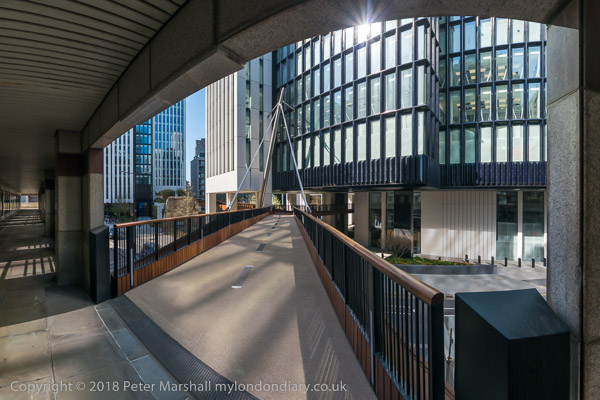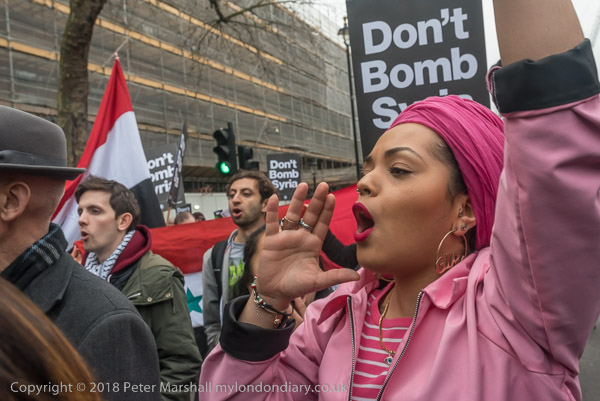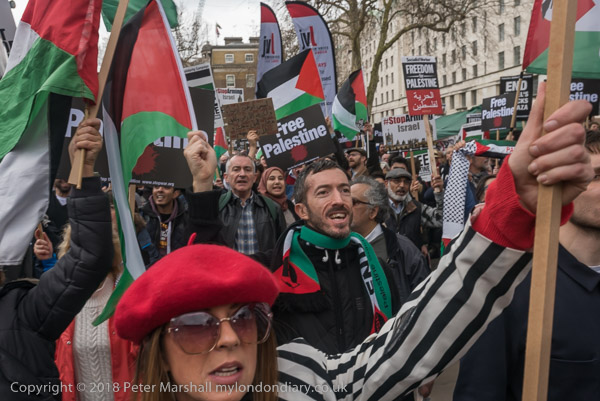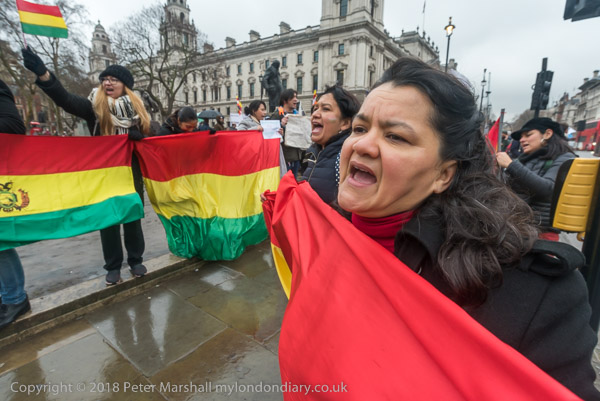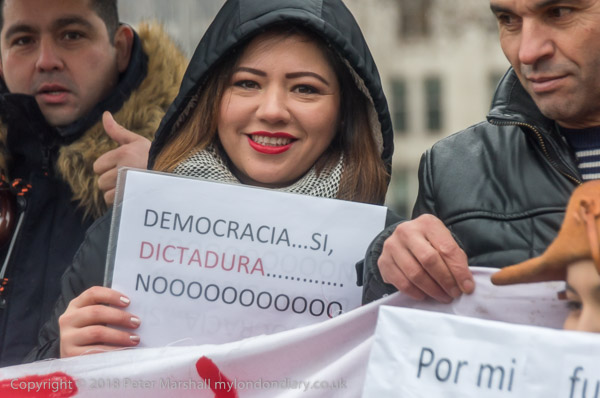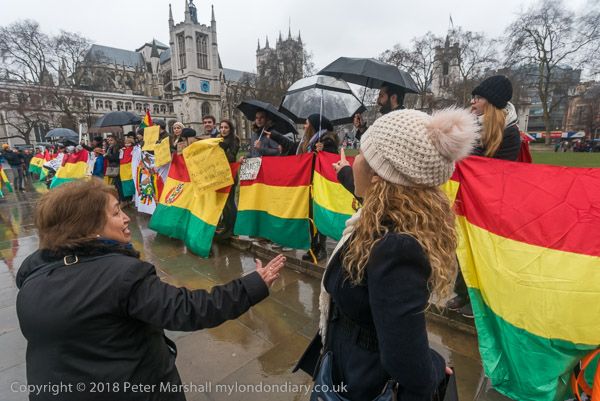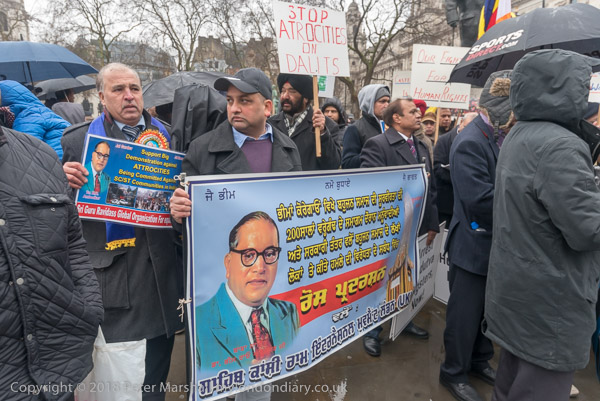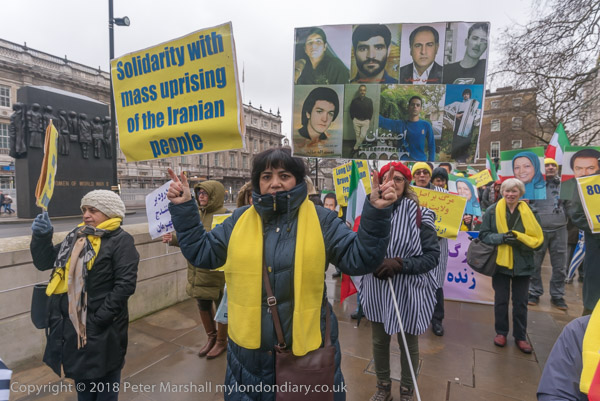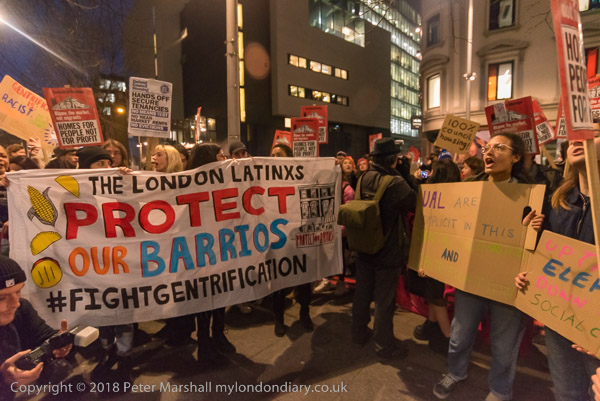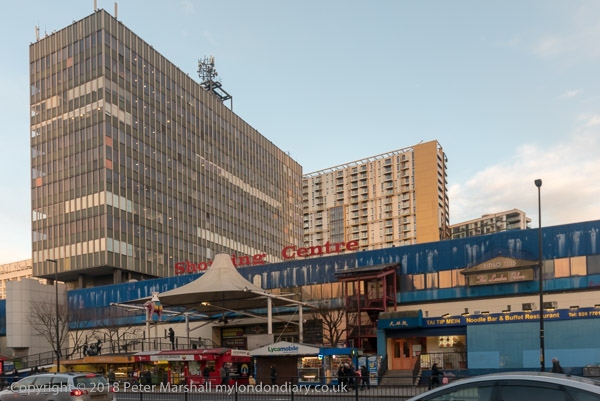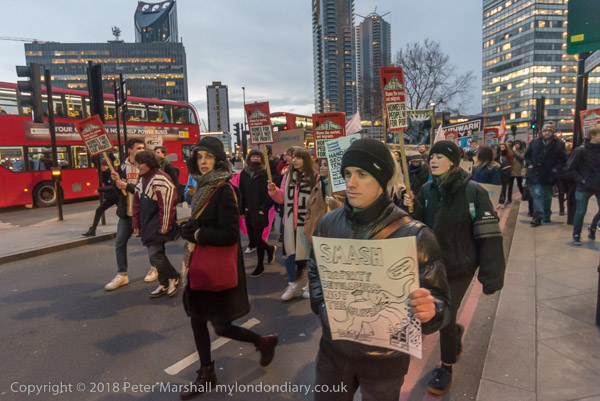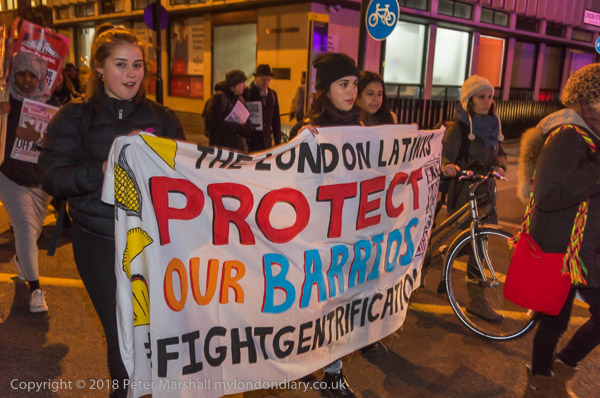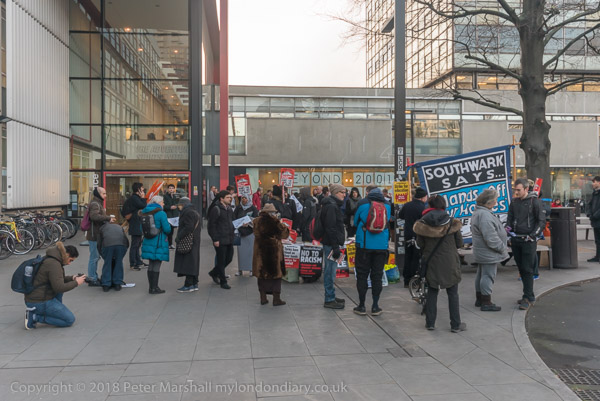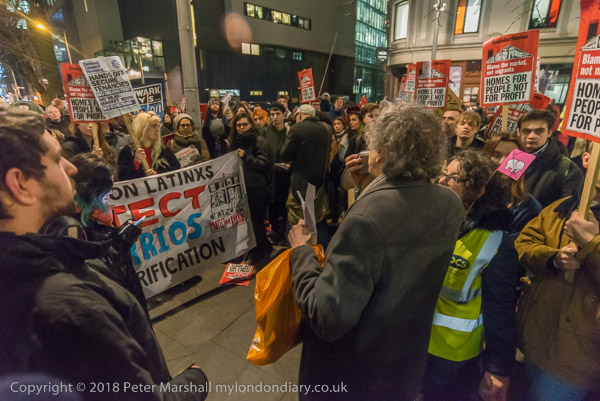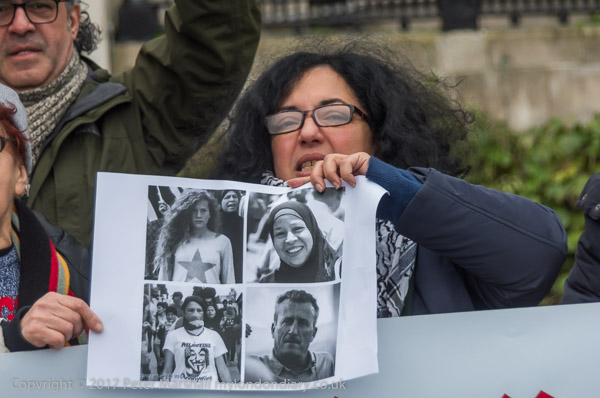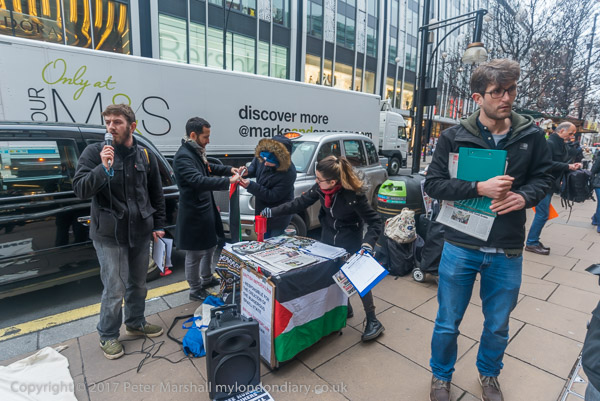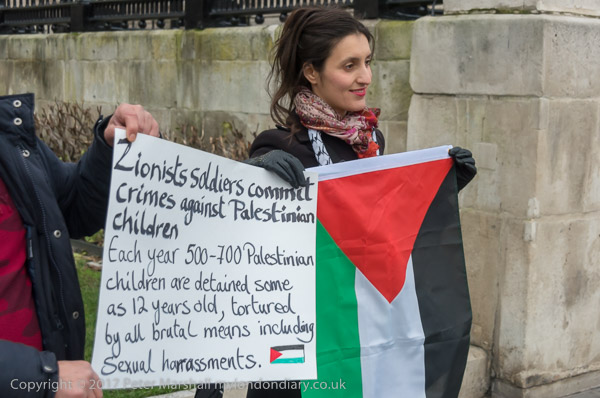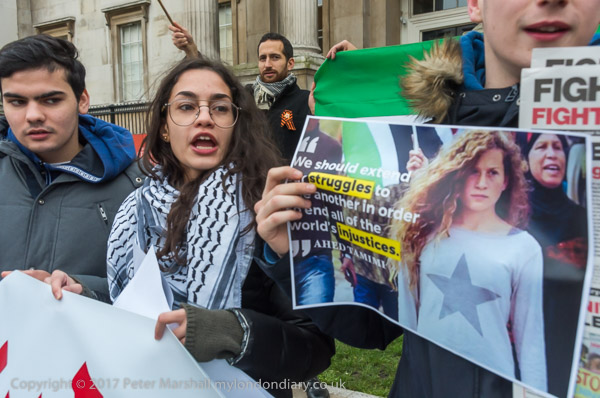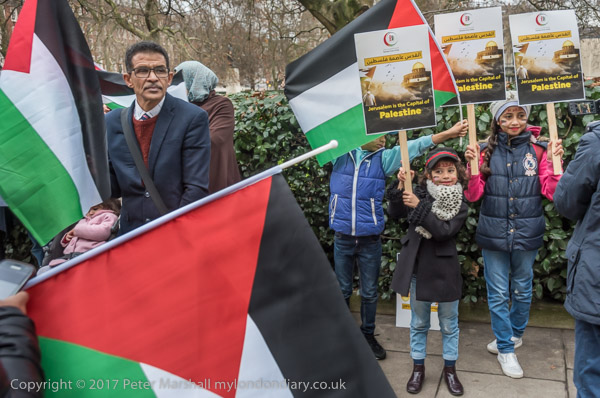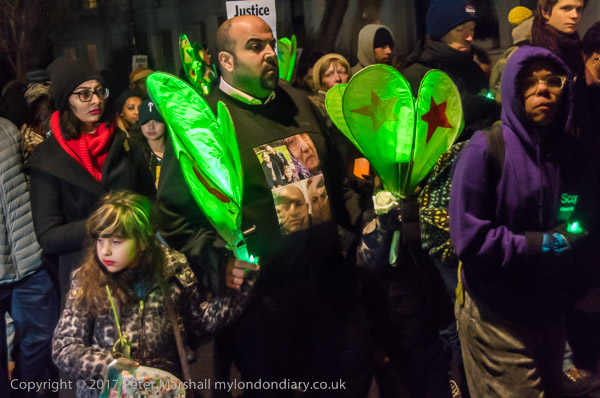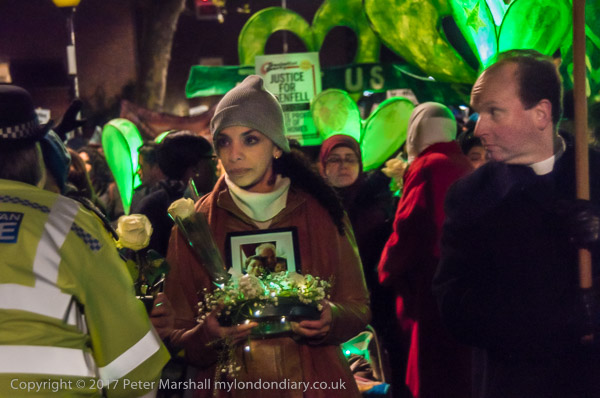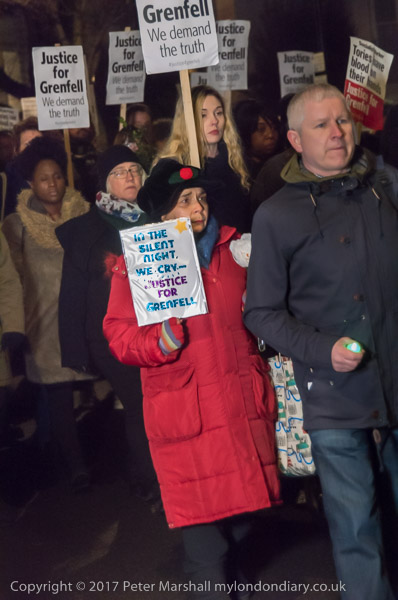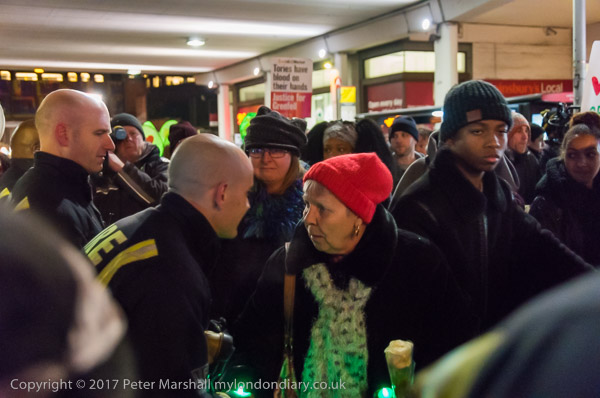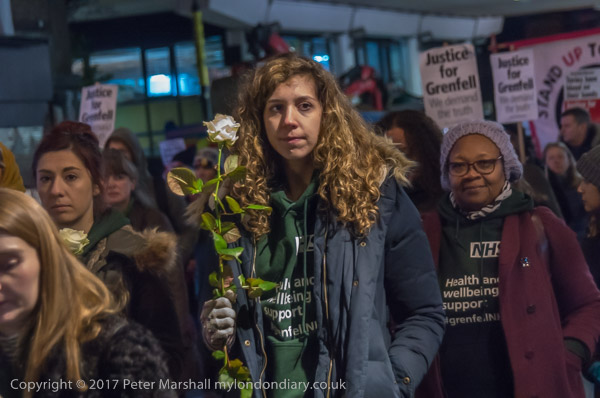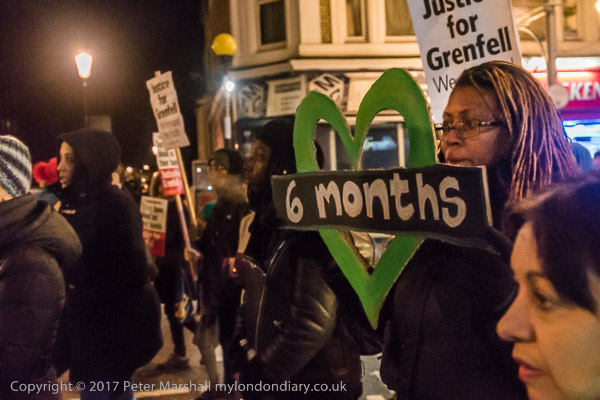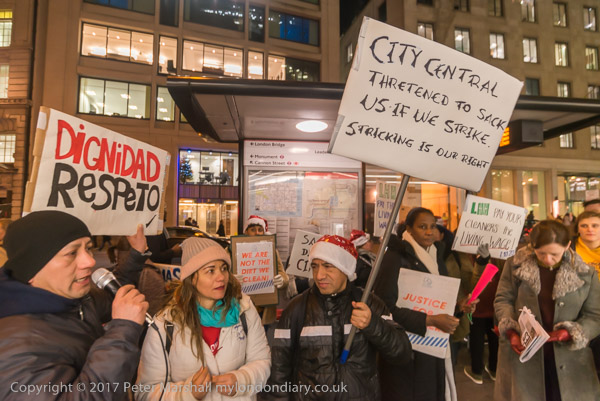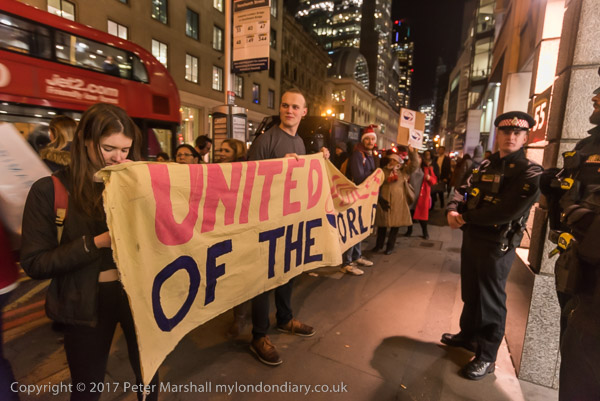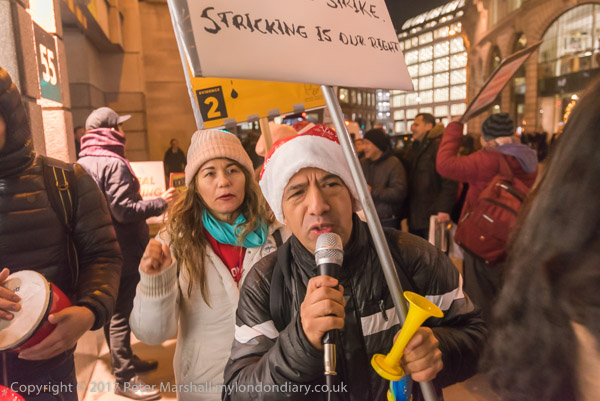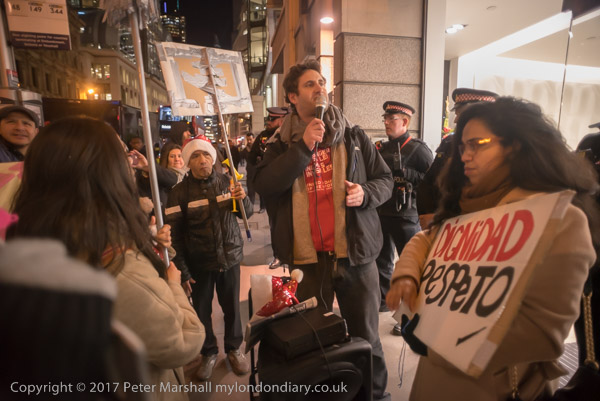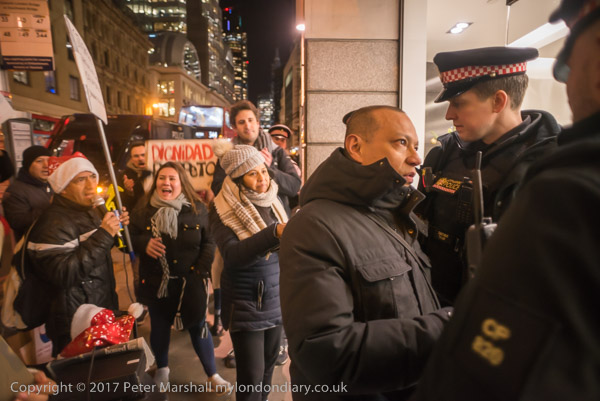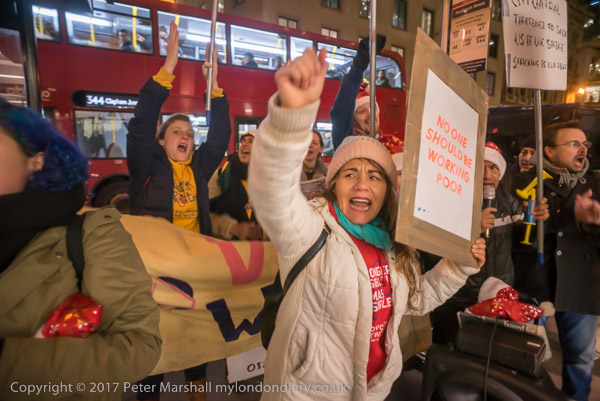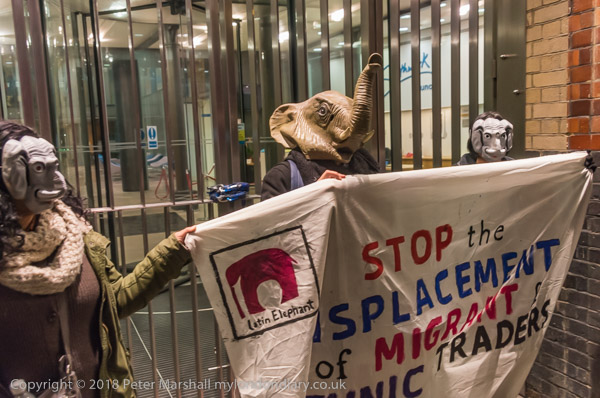
Though not actually to the Elephant, but to the dark street outside Southwark Council Offices near London Bridge for a protest outside where a Southwark Council meeting which due to vote on plans by developer Delancey and the council which would destroy the Elephant & Castle centre and the community around it. At an earlier meeting the decision had been deferred to allow Delancey to come up with new proposals to meet the community objections.
Although they had made some changes, the proposals were still nowhere near acceptable, but the protest ended in something of an anti-climax. While the protesters had been hopeful that the plans would be turned down, instead the council voted to put off the decision until a further meeting to give Delancey time to submit a revised proposal.
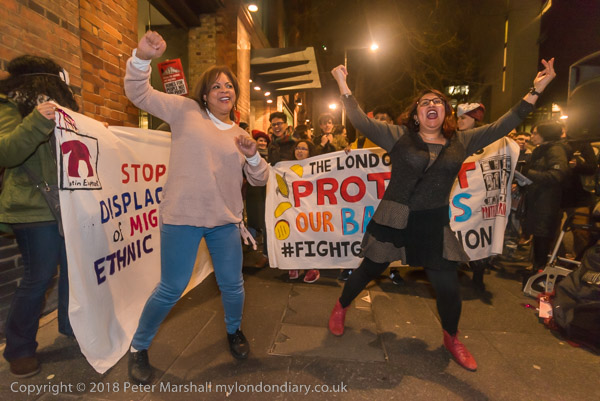
There seems to be little hope that the revised plans will be very much better, but whether they will then be approved is hard to predict. It looks as if the council cabinet that backs the private developer has enough power to keep the redevelopment on the table until the opposition in the council gets worn down enough to pass it.
So it remained likely that the redevelopment would at some point go ahead, and that most of the protesters worse fears about social cleansing etc. will be shown to have been justified, while the developers and a few in the council offices do very nicely for themselves, with some moving to lucrative private sector jobs.
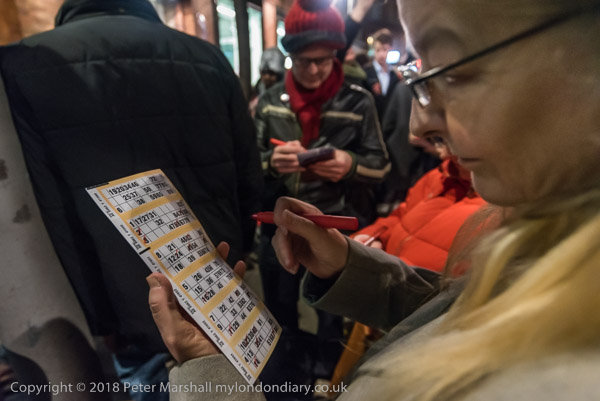
The protest was unusual, featuring Latin dancing and bingo, representing just two of the groups who will lose out. And of course elephants.
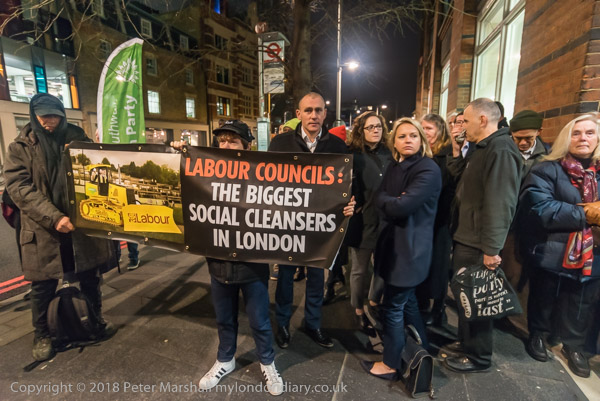
The struggle here is of course part of a wider struggle in the Labour movement, with Southwark COuncil dominated by right-wing Blairites, members of ‘Progress’, a group in the party opposed to many of its present policies and including many dedicated to the downfall of Jeremy Corbyn.
So far the Labour right have managed to maintain control of important aspects of the party machinery, which has allowed this group to continue as a Thatcherite fifth column inside the party, but with increasing support both in the party and in the nation for the new policies this may change. It has long been clear that the party’s only hope of re-election is to unite behind a leader – like Corbyn – who rejects the old and failed Blairite approach.
Estate regeneration, as first proposed under Blair, was one of the party’s better policies, but failed in essentials like taking the needs of the estate residents and others on council waiting lists into account and accounting for the clever tricks of developers. With proper consultation which actually took the residents views seriously and relatively small sums of money to renovate and refurbish, along with sensitive infill to provide new council-owned properties, most of the estates now being demolished could have a useful long-term future – as the schemes put forward by ASH (Architects for Social Housing) and others have demonstrated.
Many of the estates targeted so far are not those most in need of regeneration, but often some of the more viable estates, chosen because their position and scale means huge profits for private developers. Many of the estates from the 1960s, though possibly in out of fashion styles, are better built and to higher standards in many respects to their new replacements, and with refurbishment and maintenance would have long outlasted current builds.

Class War’s poster ‘Labour Councils: The Biggest Social Cleansers in London‘ is of course correct, because Labour controls most of London’s councils. And while Tory councils might well see social cleansing as one of their aims (as Dame Shirley Porter did as Leader in Westminster) we expect Labour councils to work for all their residents, including those in social housing, and their failure to do so is shameful.
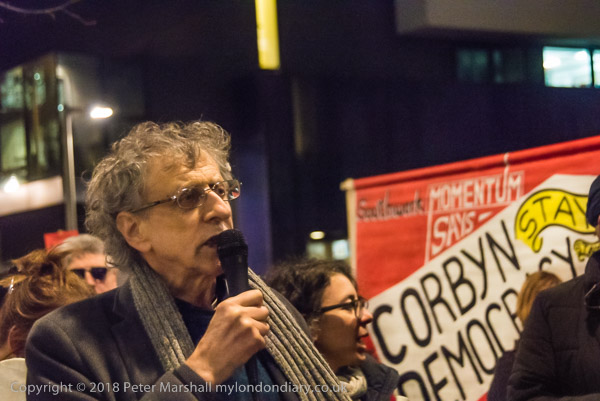
One of those who spoke at the protest was Piers Corbyn, who told us he had talked to his younger brother who was determined to see a change. I worked hard to get the name Corbyn visible behind him as he spoke, with people keeping getting in the way, but I finally managed it. Southwark Momentum just didn’t have their banner up high enough at the protest, and a few months later failed to get enough of those they supported nominated for the council.
Bingo and Dancing for Elephant & Castle
______________________________________________________
There are no adverts on this site and it receives no sponsorship, and I like to keep it that way. But it does take a considerable amount of my time and thought, and if you enjoy reading it, a small donation – perhaps the cost of a beer – would be appreciated.
My London Diary : London Photos : Hull : River Lea/Lee Valley : London’s Industrial Heritage
All photographs on this and my other sites, unless otherwise stated, are taken by and copyright of Peter Marshall, and are available for reproduction or can be bought as prints.
To order prints or reproduce images
________________________________________________________
